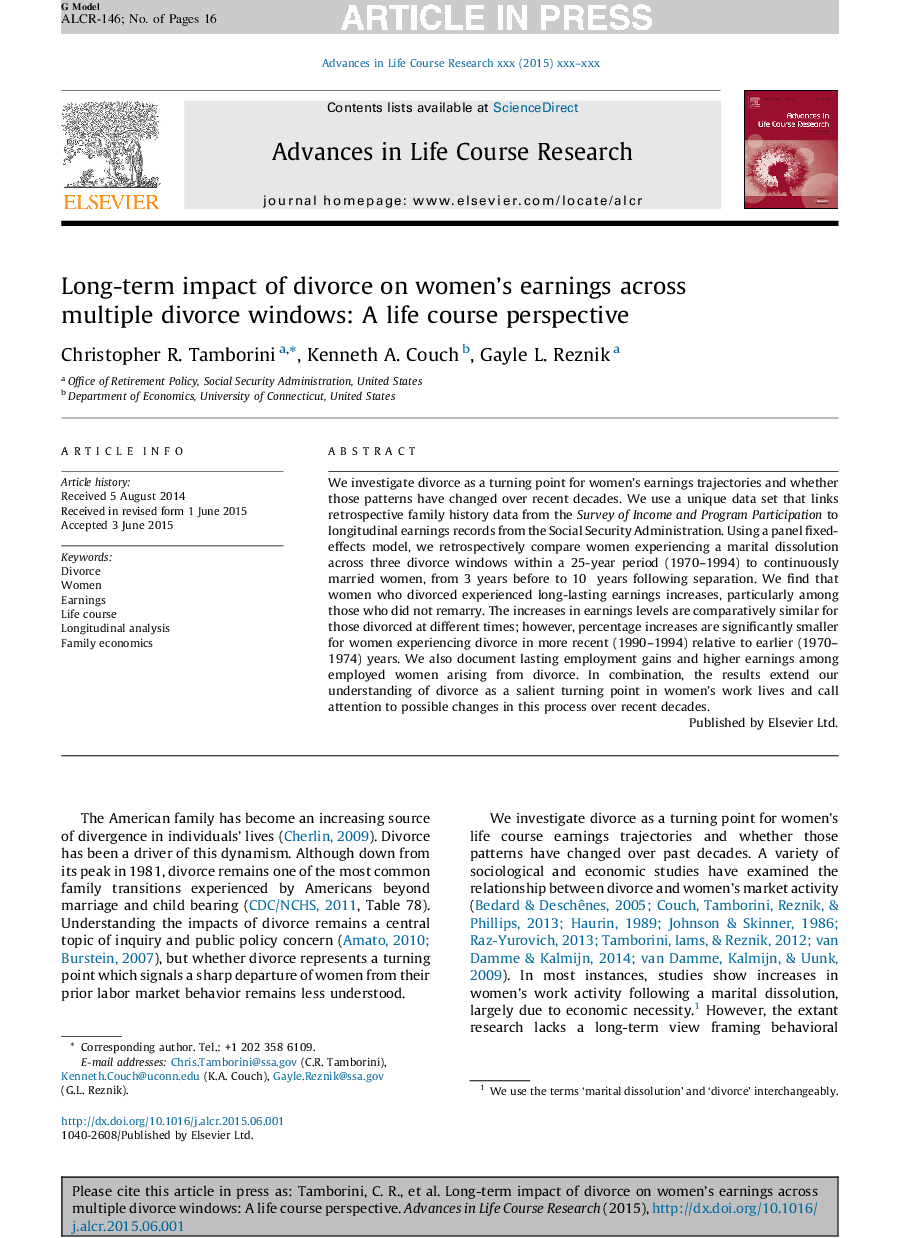| Article ID | Journal | Published Year | Pages | File Type |
|---|---|---|---|---|
| 6784884 | Advances in Life Course Research | 2015 | 16 Pages |
Abstract
We investigate divorce as a turning point for women's earnings trajectories and whether those patterns have changed over recent decades. We use a unique data set that links retrospective family history data from the Survey of Income and Program Participation to longitudinal earnings records from the Social Security Administration. Using a panel fixed-effects model, we retrospectively compare women experiencing a marital dissolution across three divorce windows within a 25-year period (1970-1994) to continuously married women, from 3 years before to 10 years following separation. We find that women who divorced experienced long-lasting earnings increases, particularly among those who did not remarry. The increases in earnings levels are comparatively similar for those divorced at different times; however, percentage increases are significantly smaller for women experiencing divorce in more recent (1990-1994) relative to earlier (1970-1974) years. We also document lasting employment gains and higher earnings among employed women arising from divorce. In combination, the results extend our understanding of divorce as a salient turning point in women's work lives and call attention to possible changes in this process over recent decades.
Related Topics
Physical Sciences and Engineering
Mathematics
Statistics and Probability
Authors
Christopher R. Tamborini, Kenneth A. Couch, Gayle L. Reznik,
